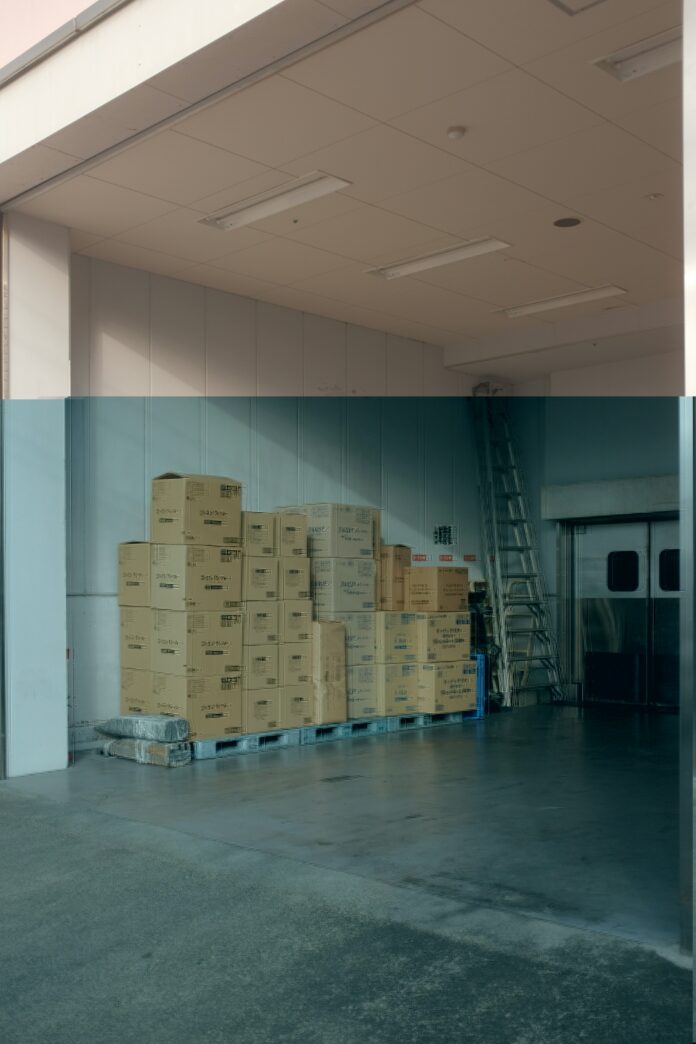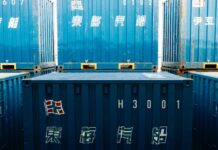
Shipping is the lifeblood of any business that moves goods across cities, states, or even countries.
Whether you’re a small e-commerce company sending out multiple customer orders or a manufacturer shipping pallets to retailers, choosing the right shipping method can make or break your logistics efficiency and cost-effectiveness.
One of the most important decisions you’ll face is whether to use LTL (Less Than Truckload) or FTL (Full Truckload) shipping.
Understanding the difference between these two freight options and knowing when to use each can help you optimize delivery times, reduce costs, and ensure your items arrive safely. In this detailed guide, we’ll break down everything you need to know about LTL vs. FTL shipping, including advantages, disadvantages, and how to decide which option fits your business best.
What Is LTL Shipping?
LTL, or Less Than Truckload shipping, is designed for shipments that don’t require an entire truck. Instead of booking a full trailer, your goods share space with freight from other businesses. Each shipment occupies a portion of the truck, and the total cost is divided among all shippers based on the weight, volume, and distance traveled.
Typically, LTL shipping is used for freight weighing between 150 and 15,000 pounds, or when goods take up less than about half of a standard 53-foot trailer. Carriers combine multiple shipments headed in the same direction, optimizing truck space and fuel efficiency.
LTL is perfect for companies that need to ship smaller loads frequently rather than waiting until they can fill an entire truck. It’s also a common choice for large item shipping services that handle bulky products like furniture or equipment but don’t have enough volume for a full truckload.
What Is FTL Shipping?
FTL, or Full Truckload shipping, is used when you need the entire truck for your shipment. That might be because your freight takes up most of the trailer space, is particularly heavy, or because you simply want your goods to move directly from origin to destination without any stops or transfers.
An FTL shipment typically ranges from 10,000 to 45,000 pounds or fills the truck close to capacity. In this model, you’re paying for the entire truck, whether you fill it completely or not.
Businesses that ship in bulk or deal with fragile, high-value, or time-sensitive cargo often prefer FTL shipping. Since the shipment doesn’t share space with other loads, it travels faster and with less handling, reducing the risk of damage or delay.
When to Use LTL Shipping
LTL shipping is a fantastic choice for many small and mid-sized businesses that don’t need to fill a truck. But there are specific scenarios where it makes the most sense.
- You Have Small or Partial Loads: If your shipments are too small to justify a full truck, LTL helps you save money by sharing transportation costs. You only pay for the portion of the truck your goods occupy, which can dramatically reduce expenses.
- You Ship Frequently: Businesses that send multiple smaller shipments to different destinations benefit from LTL’s flexibility. It allows you to ship as needed rather than waiting until you accumulate enough goods for a full truckload.
- You Want to Lower Costs: Because costs are shared among multiple shippers, LTL is often the more economical option, especially if speed is not your top priority.
- You Have Non-Urgent Deliveries: LTL shipping involves multiple stops and transfers, which can lengthen delivery time. If your customers or recipients are not in a rush, this slower but cheaper method is a smart move.
- You Use Palletized or Packaged Freight: LTL shipping works best when your goods are packaged securely on pallets. This reduces handling risks and allows carriers to optimize trailer space efficiently.
When to Use FTL Shipping
FTL shipping is ideal when your logistics priorities shift toward speed, security, or the need to move large quantities at once.
- You Have Large or Heavy Shipments: When your freight fills most or all of a trailer, FTL becomes the clear winner. It’s designed for high-volume shipments that justify paying for an entire truck.
- Your Shipment Is Time-Sensitive: FTL carriers go directly from pickup to delivery without intermediate stops. That means faster transit times, perfect for businesses operating on tight schedules.
- You’re Shipping Fragile or High-Value Goods: Since FTL shipments don’t get transferred or combined with others, there’s less handling, reducing the risk of damage. This is essential for delicate or expensive items.
- You Want Predictable Transit Times: With FTL, there are no shared loads or route changes. The shipment timeline is consistent and reliable, which makes it easier to plan warehouse and customer deliveries.
- You’re Moving Long-Distance Freight: The further your shipment travels, the more cost-effective FTL becomes, especially when accounting for reduced damage risk and faster delivery.
Cost Comparison
When deciding between LTL and FTL shipping, cost is often the deciding factor. But it’s not as simple as “LTL is cheaper.” It depends on what you’re shipping and how far it’s going.
LTL carriers charge based on a few variables:
- Freight class (based on density, value, and handling difficulty)
- Weight and dimensions
- Distance and route
- Accessorial fees (for services like liftgate delivery or residential drop-off)
FTL pricing, on the other hand, is typically calculated as a flat rate per mile or per load. While FTL may seem more expensive upfront, it often becomes more cost-efficient for heavier or bulk shipments because you’re not paying extra per pallet or for multiple transfers.
If you regularly ship large, bulky items, like furniture, gym equipment, or appliances, working with a provider that offers large item shipping services can help you compare both LTL and FTL rates to find the sweet spot for your needs.
Transit Time and Delivery Speed
Speed is another major factor in the LTL vs. FTL debate.
LTL shipments can take longer because they involve multiple pickups and drop-offs, similar to a public bus making stops along the way. Each stop adds time, and sometimes your shipment might be transferred between trucks or terminals, increasing the potential for delays.
FTL shipments, in contrast, operate like express routes. Once the truck is loaded, it drives directly to the destination without any stops. If you need guaranteed delivery times or same-week shipping, FTL is the faster and more reliable choice.
Risk and Handling Considerations
Every time your shipment is moved, from one truck to another or within a warehouse, it increases the risk of damage. LTL freight, by nature, involves more handling, since it’s often loaded and unloaded multiple times before reaching its final destination.
FTL freight stays on the same truck throughout its journey. Fewer touchpoints mean less chance for damage, which is particularly important for sensitive, fragile, or high-value products.
To minimize risk with LTL shipments, make sure your goods are:
- Properly palletized
- Shrink-wrapped or crated
- Labeled clearly
- Insured for the appropriate value
Environmental Impact
Interestingly, LTL shipping tends to be more environmentally friendly because it consolidates multiple shipments onto one truck. This means fewer trucks on the road and lower carbon emissions per shipment.
FTL, while faster and more direct, is less efficient in terms of fuel usage if the truck isn’t fully loaded. However, for large, consistent shipments, FTL can still be sustainable, especially when carriers use modern, fuel-efficient fleets.
Technology and Tracking
In today’s logistics landscape, both LTL and FTL carriers offer digital tracking, real-time updates, and automated booking systems. However, FTL tracking is often more precise since there are fewer transfers and variables involved.
With LTL, tracking may show more frequent status updates (arrived at terminal, loaded onto new trucks, etc.), but this also means more opportunities for slight delays.
If shipment visibility is crucial, say, for just-in-time manufacturing, FTL may offer the peace of mind you need.
Industry Applications
Different industries benefit from different shipping models. Here’s a breakdown:
- E-commerce: LTL works great for smaller shipments or replenishing retail stock.
- Manufacturing: FTL is ideal for moving bulk raw materials or finished goods.
- Furniture & Appliances: Large item shipping services often use both LTL and FTL, depending on volume.
- Food & Beverage: FTL is preferred for temperature-controlled and perishable items.
- Healthcare & Pharmaceuticals: FTL ensures safety and compliance with regulations.
Hybrid Shipping
Many companies find success using a hybrid shipping strategy, mixing LTL and FTL depending on their needs.
For example, a retailer might use LTL to restock smaller stores or regional warehouses and FTL to transport larger volumes to distribution centers. This flexibility allows businesses to optimize cost and speed without committing to one method exclusively.
Choosing the Right Freight Option for Your Business
At the end of the day, the decision between LTL and FTL shipping isn’t always clear-cut, it depends on your unique logistics needs. Small businesses often start with LTL to manage costs and scale up to FTL as they grow. Large enterprises might use a mix of both, balancing efficiency and speed.
Whether you’re shipping small boxes or oversized cargo, it’s crucial to partner with experienced logistics providers that understand the nuances of each method.
Companies specializing in large item shipping services can help tailor a solution that fits your budget, protects your goods, and meets delivery expectations.





